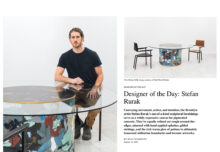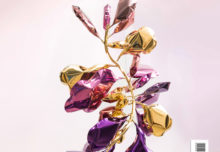Blending Rococo and Kitsch, Beth Katleman Explores the Myths of DomesticityArtsyMarch 30, 2015
Todd Merrill Studio
80 Lafayette Street
New York NY 10013
Phone: 212 673 0531
80 Lafayette Street
New York NY 10013
Phone: 212 673 0531
Website: www.ToddMerrillStudio.com
E-mail: info@ToddMerrillStudio.com
Instagram: @ToddMerrillStudio
E-mail: info@ToddMerrillStudio.com
Instagram: @ToddMerrillStudio
Todd Merrill Summer Studio
11 South Main Street
Southampton, NY 11968
Phone: 631 259 3601
11 South Main Street
Southampton, NY 11968
Phone: 631 259 3601






